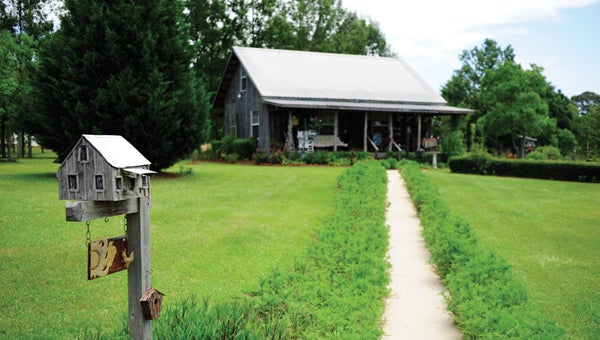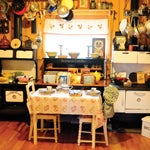
By Emily Beckett
Stepping into Mary Crumpton’s “little house” in Thorsby is like stepping back in time.
Pick a time period within the last 200 years, and Crumpton most likely has at least one item from that era in her cozy cottage on Third Street.
Crumpton, 68, and her husband Marvin, 71, own the house and live up the road in a second house on their well-manicured, ornately landscaped, 10-acre spread of land.
They built the little house about 15 years ago specifically for Mary’s baking and sweets business, Little House Bake Shop.
She opened the shop in 2005 and sold homemade cinnamon rolls, dinner rolls, pecan pies, cakes and cookies, mostly to family and friends who knew how delicious her baked goods were.
About a year later, Crumpton decided to close the shop so she wouldn’t have to juggle it with her lunchroom job at Thorsby School.
“I was still working at the time, and it just got to be too much,” Crumpton said.
The closing of the shop, however, allowed Crumpton to explore a new use for her rustic little house and delve more deeply into her favorite hobby of collecting antiques.
Crumpton turned the house—made of roughly hewn hardwood pine from local forests—into a hub for her family heirlooms and steadily growing antiques collection.

“This is the type of house I was brought up in,” Crumpton said. “You always go back to how you were brought up.”
Crumpton said the house resembles those typically seen in the 1930s and ’40s, the Great Depression era, with wooden walls, floors and a metal roof.
The house, about 1,350 square feet, comprises four rooms, a bathroom and a storage area upstairs.
Although it is modeled after primitive homes from the mid-20th century, the house has modern plumbing and electricity.
“My husband just drew it up and had it built,” Crumpton said. “He basically just used memories of the houses he grew up in.”
Crumpton, an avid antiques collector, began filling her little house with antique furniture and décor as soon as it was built, but she took her collecting and decorating to a higher level after the bake shop closed.
Angie Barnett, one of Crumpton’s daughters and an antiques aficionado herself, was happy to help her mother expand her collection on display in the little house.
Barnett accompanies Crumpton on her antiques hunting excursions and rivals her mother in her passion for finding rare pieces of history tucked away in unlikely places.
“We were pickers before we even knew what pickers were,” Barnett said.
Barnett said vintage items like the old G.E. Frigidaire refrigerator and a spinning wheel in the house bring back memories for older visitors and provide learning moments for Crumpton’s grandchildren.
“I think that’s what everybody connects with when they come in,” Barnett said. “They find an artifact that connects them with their childhood. It makes you smile when you walk in and see something and say, ‘Oh, my grandmother had that.’”
Other large pieces Crumpton has acquired over the years include an early-1900s claw foot bathtub from an auction in Vida Junction in Autauga County and a wood burning stove and wardrobe from a lady in Prattville; an oak mantle and its original mirror from a lady in Montevallo; and a woman’s burgundy-colored, taffeta dress from the Civil War era purchased in Jemison.
Crumpton frequently finds herself in the “dining room” of the house, replete with Victorian furnishings and place settings she loves.
Crumpton said she has no intentions of selling her antiques, which she lovingly looks at and rearranges on a daily basis.
“Some collectors buy and sell, but this collector buys and keeps,” Barnett said of her mother. “The history behind artifacts I think is what intrigues collectors. Every piece has a story.”
As Barnett was going through a stack of papers in Crumpton’s items recently, she found a Thorsby Institute newsletter dated 1952.
They gave the newsletter to the town to be displayed in the Thorsby Museum.
Crumpton’s little house has become a meeting place for her family and friends, as well as local groups that learn of her hidden haven in Thorsby and gain her permission to use the house for their events.
Birthday parties, reunions, church socials and even an old-fashioned Christmas for Crumpton and her family have taken place at the little house.
“It’s hard to explain—it’s a given to have it at the little house,” Barnett said. “It’s right in the middle of a residential area, but it’s big enough you don’t feel like you’re in a residential area.”
For Crumpton, spending time in and around her little house is therapeutic, and she hopes it is for anyone who visits.
“If you’re distressed, you forget about your troubles,” Crumpton said. “I feel like I’m home here.”
